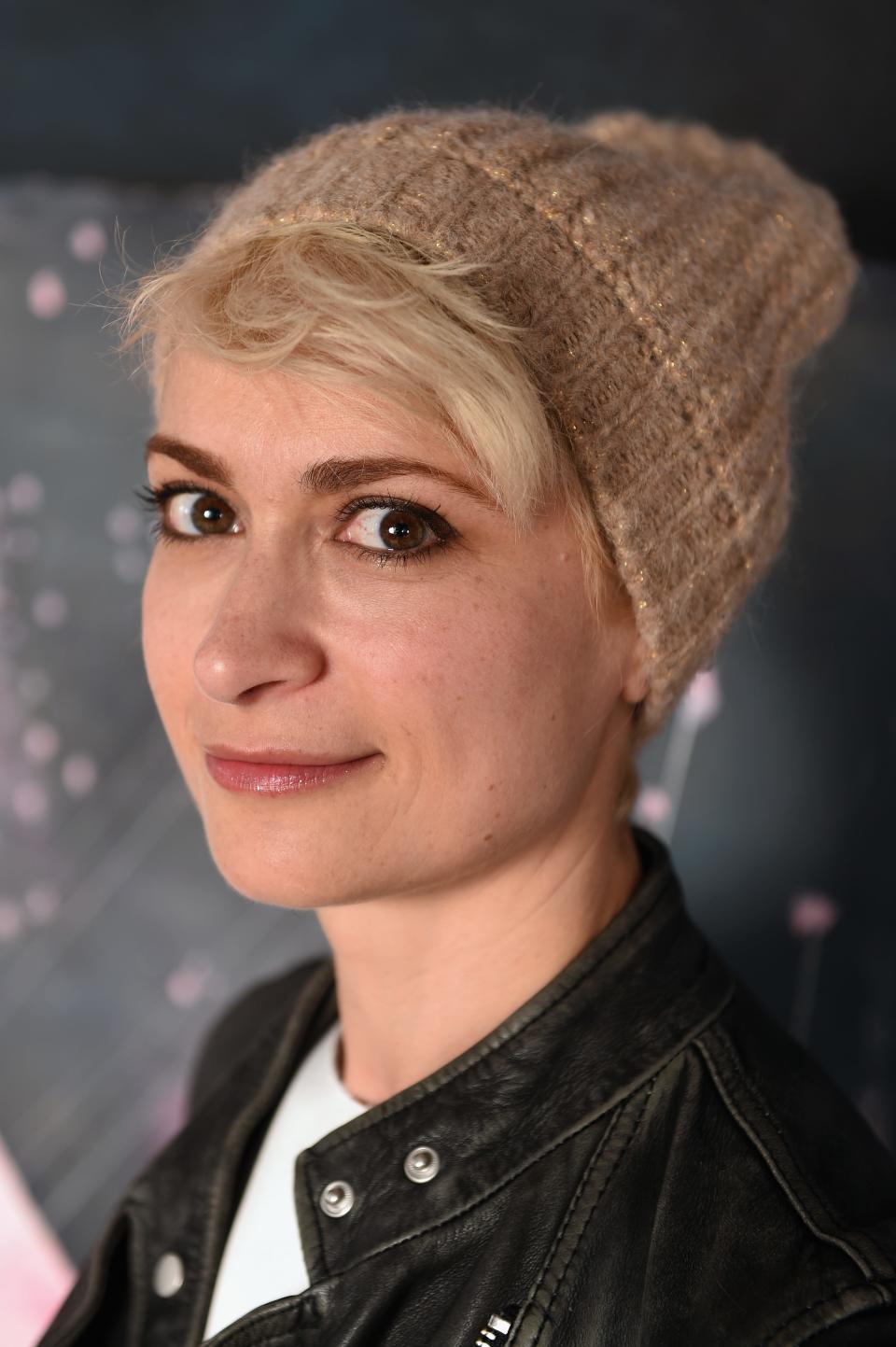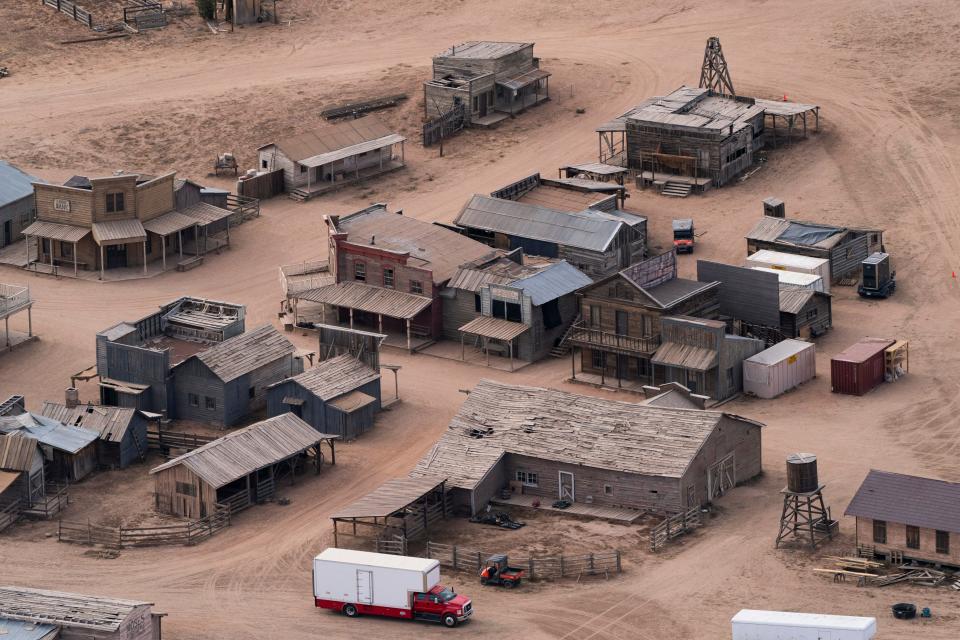I work with firearms on movie sets. There are multiple steps in place to avoid accidents.
I woke up sobbing after what happened on a film set in Santa Fe, New Mexico, where a horrible accident took place that killed cinematographer Halyna Hutchins and injured director Joel Souza on the set of "Rust," starring Alec Baldwin.
This is a nightmare. I am praying for all involved. We are a small group of professionals, and this is like hearing a family member was involved in the worst accident imaginable, albeit perhaps only imaginable to those “pretending” to fire guns for a living.
Wrongful death lawsuit: Alec Baldwin sued by Halyna Hutchins' family after fatal shooting on 'Rust' movie set
I facilitate the use of firearms in the film industry as an armorer. My specialty has been working on the set of Westerns. I have been asked to share some facts about our profession to filter any speculation about the tragedy that has occurred.
Preparing to use firearms on set
Most firearms shown up close or fired on film are real, which requires paperwork, permits, lockboxes, safes and monitoring, among other things.
Western movies are unique in that they generally use a type of handgun called a revolver. The revolvers require no modifications to operate with blank cartridges. A live round with the projectile or a blank round with no projectile will both fit. These guns are generally rented by the prop master or armorer from a rental house in the business.

The revolvers on Westerns are manually cocked with a hammer by your thumb to turn a cylinder holding the cartridges. Every pull of that hammer indexes one round in line with the barrel and the hammer stays back. By pulling the trigger the hammer drops. It has a firing pin on it that penetrates a hole in the rear of the frame of the gun.
Campbell: Part of the family: Why domestic violence victims won't leave unless their pets are safe
It pokes past the frame – striking the rear of a brass cartridge loaded in one of the cylinder’s chambers, hitting a small circular object on the back of that cartridge. This primer sparks inside when struck. That spark sets fire to gunpowder.
If this was a live round it would have a lead bullet pressed into the front of the brass cartridge. The pressure of the exploding gun powder forces the lead tip out of the barrel.
With a blank, this would all happen with the exception of the lead bullet. Instead, the tip of the cartridge is crimped to a point. The crimped brass holds the powder in. In some cases, a foam wad may do the same job and disintegrates with the explosion. When fired the crimp opens, letting hot gas, fire and some bits of powder out of the muzzle. At a certain distance, this all dissipates harmlessly.

Up close it can be dangerous. Point blank it could be deadly. Dummy rounds in the industry look like live rounds. They have the lead tip. However, they contain no gun powder and the primer in the back is inert. Generally speaking, live rounds are never on set except for rare occasions for educational shows that are actually filming on a gun range.
In place of the powder, in a dummy round a single BB is placed inside. When you shake them you know. Also, the primer on the back is a piece of machined solid brass. These look the part but do not fire. They are sourced from the prop house or armory. On a Western set, they are everywhere. All of the gun belts are stacked with 15 to 25 rounds.
When filming a revolver, the front of the cylinder and gap to the rear of the cylinder are visible. You can see if it is loaded or not. Dummy rounds are placed in the cylinder to give the appearance that the gun is loaded. Before being placed in the gun, I show them to the first assistant director. He or she shakes them listening for that BB inside. Then I load them in the gun. I try to fire all of the dummy rounds at the floor in front of the assistant director. Nothing happens. I then present the gun to the talent, also firing at the floor so they see. If they are pointing it at another player, I also show them.
With a large amount of crew present, that often means the actors will be pointing weapons in the direction of players and crew. Sometimes the script dictates this.
These are the safety protocols involving dummy rounds:
Wade: Health care: I gambled with my life and got lucky. But too many Black women lose.
The blank ammunition we use comes in a variety of loads and powder types per application. They are sourced from the prop house or armory. Generally, the same one I rent the guns from. The boxes are clearly marked and labeled.
There are only a few ways guns on set can be deadly – a blank shot point-blank to the head, something foreign stuck in the barrel of the gun and a blank is fired behind it creating a projectile, and if a live round is mistaken for a dummy round and instead of dry firing it actually fires.
Safety on set
When we need to have the actress or actor fire the gun, they generally meet with me for training. We go over firearm safety and operation. When we are on set, we do a rehearsal with fake or “cold” (unloaded) guns. Guns are deemed cold after I and the assistant director and the actress and actor are shown that the chambers are empty. When it is time to shoot, I first shine a light down the bore of the barrel to make sure there is nothing accidentally stuck in there that would become a projectile when fired.
Along with the assistant director, we discuss where the actors and crew will be. We decide what load blank to use. We declare that to the talent and crew. Both the talent and crew are issued ear protection, and sometimes eye protection. We load up. The gun is now “hot.” After everyone is set and the crew and camera are ready, the assistant director has me hand the hot weapon to the talent. We yell “fire in the hole” or “hot weapon.” Sometimes we relay how many shots will be fired. The scene is filmed. We make any changes necessary, we reload and go again.

In addition to myself, there are multiple levels of crew responsible for safety, including the assistant director who is running the set. The stunt coordinator assists at times as well as the prop master who sources the props and books the armorer. Then there are the producers who help put the crew together, and even the armory that the firearms and ammunition are sourced from. Some productions have a specific safety adviser as well as a fire safety officer on set looking into firearm use. There are so many levels of gun safety, especially on larger-budget projects. The combined safety measures are what make incidents like the shooting in Sante Fe so incredibly rare and even more tragic.
Joey Dillon is a union armorer based in Los Angeles and an expert gun handler in the entertainment industry.
You can read diverse opinions from our Board of Contributors and other writers on the Opinion front page, on Twitter @usatodayopinion and in our daily Opinion newsletter. To respond to a column, submit a comment to letters@usatoday.com.
This article originally appeared on USA TODAY: Alec Baldwin 'Rust' shooting with 'live rounds' renews safety talks

